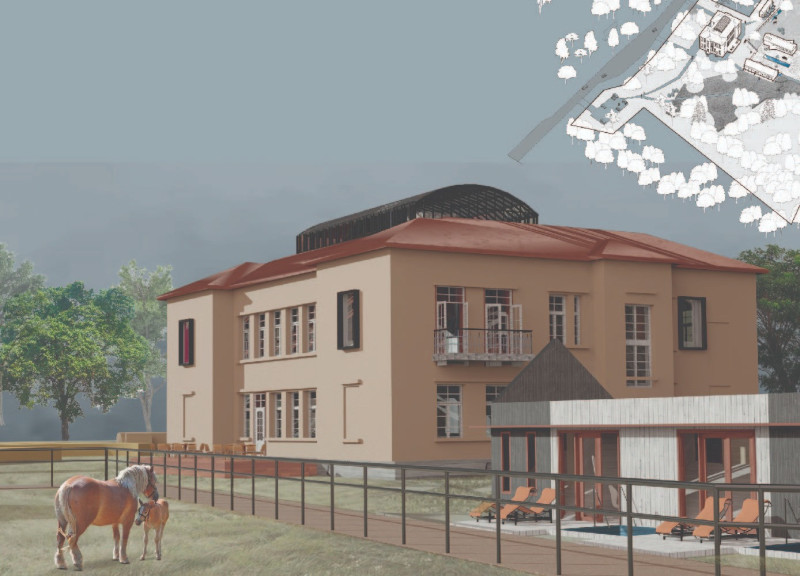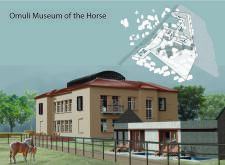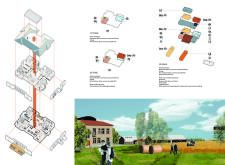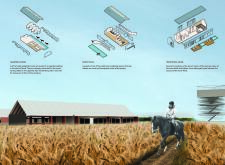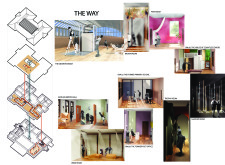5 key facts about this project
The Omuli Museum of the Horse is located in Omuli and focuses on equestrian culture. It aims to serve as a space where art and community can come together. The design divides the museum into three stages, each with its own purpose, facilitating engagement among artists and visitors.
Functional Stages
The first stage includes artists' workshops that support creative activities. A kitchenette is part of this area, which will serve basic cooking needs initially but is designed to transition into a restaurant kitchen later. There is also adequate storage space and restrooms to enhance comfort and convenience for both artists and guests.
Expanded Accommodations
In the second stage, the design introduces living spaces for artists. This addition promotes collaboration by allowing artists to live and work in the same location. The surrounding landscape has also been considered carefully, providing an inviting connection between the museum and its natural setting, making the environment accessible and attractive.
Public Engagement and Amenities
The third stage brings in public features such as hotel rooms and a Glemping house, designed to provide a unique hospitality experience tied to the horse theme. There is also a restaurant and the main attraction, the Museum of the Horse, reinforcing the project's connection to local heritage. The horse stables serve as a visual anchor that encapsulates the project's essence.
Diverse Exhibition Spaces
The museum consists of various exhibition spaces that invite exploration and engagement. Rooms like The Observatorium, The Way, and the Main Exhibition Hall allow visitors to experience different themes and ideas presented through art. Historical rooms associated with the community, such as The Former Primary School and The Former Post Office, add depth to the narrative, enriching the visitor experience and connecting them to the area's history.
Careful design choices create spaces that encourage interaction and contemplation, culminating in the horse stables, which provide a direct visual link to the equestrian theme. This thoughtful layout underlines the project’s commitment to celebrating local culture and the arts.


